History of Navratri
Navratri is a nine-day Hindu festival celebrated across the country with much faith and reverence. The devotees give honor to the Gods and Goddesses who were able to save the world from the hands of the evil characters during this time of the year. This is a very important event for them. In different parts of India, people believed that the origin of this feast is rooted on the different Indian legends. The following stories of the North and East India give people a clearer picture of the history of Navratri.
| Navratri Cards | ||||
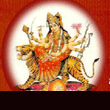 SEND SEND |
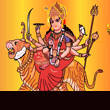 SEND SEND |
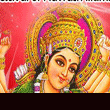 SEND SEND |
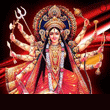 SEND SEND |
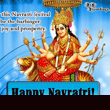 SEND SEND |
| Navratri | History | Significance | Celebrations | Dates | Puja | Vrat Katha | Fasting |
| Garba | Cards | Messages | SMS | Recipes | Wallpapers | Greetings | Scraps |
Goddess Durga of North India
In North India, there was once a mighty demon named Mahishasura who worshipped Lord Shiva to obtain the power of eternity. Soon after his desire was granted, he started killing and harassing innocent people. He was also determined to win over the three lokas. Alarmed with what is happening, the gods in swargaloka decided to ask Lord Shiva to help them get rid of the demon. As an answer to their hopeful pleas, the Trinity of Brahma, Vishnu and Shiva united their powers and created a divine female warrior to protect the world from Mahishasura. This female warrior is Goddess Durga. Upon laying eyes on the divine beauty of the goddess, the demon got mesmerized. He offered her marriage. Durga agreed to marry him in one condition. He needs to defeat her in a battle.
The battle continued for nine nights. And at the end of the ninth night, Goddess Durga beheaded Mahishasura. This became the origin of the nine days of the Navratri. The tenth day brought the triumph of good over evil and has been called Vijayadashmi.
Uma and the Eastern Belief in India
Daksha, the king of the Himalayas, had a beautiful and virtuous daughter named Uma. It has always been her wish to marry Lord Shiva. In order to please him, she worshipped him well. Finally, she was able to win his affection. Once they were married, Daksha has been displeased by Shiva resulting to the breaking off of his relationship to his daughter and son-in-law. When he organized a yagna, he did not invite Shiva. Uma got angry at her father’s rude behavior towards her husband so she decided to end her life and jumped into the agnikund of the yagna. She was re-incarnated and again won Shiva as her groom. But this time, peace has been restored. Since then, she was believed to visit her parents’ home every year during the Navratri.
Rama and Ravana of the Ramayana Epic
According to the epic, the demon king Ravana had abducted Sita. In order to save her, Lord Rama worshipped Goddess Durga for nine days to gather the strength and power to kill the demon king. On the tenth day, Ravana was killed by Rama. Those nine nights became to be known as Navratri and the tenth day was then called Vijayadashmi or Dusshera.